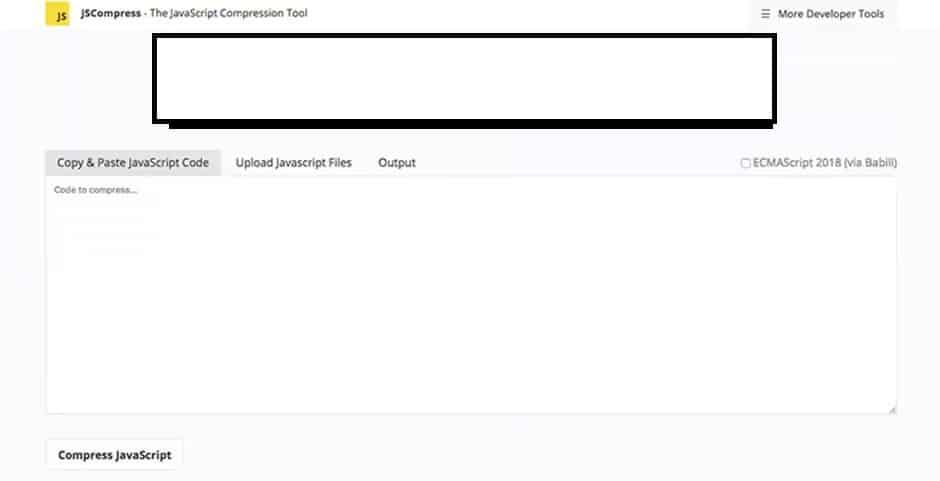HTML Minifier is a free online tool that can help you make your HTML code more readable and clean. It’s a handy program for cleaning the messy and hard-to-read HTML code.
The HTML Minifier uses a straightforward method that makes it possible to do the job without knowledge of HTML or CSS. So, let’s see how HTML Minifier works! How does HTML Minifier Works? HTML Minifier works by taking the text you provide and breaking it down into smaller pieces that are easier to read and process.
It also removes all the unnecessary tags and attributes from the text, making it easier to understand and edit.
Why Minify HTML?
The primary goal of this exercise is to reduce the number of spaces, rename variables, and remove comments.
Though developers make the code and markup more readable for others, they should make the code and markup more readable for themselves.
If it were the adverse effect, I’d put it up to one hundred percent, but I don’t see that as a problem.
When files are minified, comments, extra spaces, and variable names are removed. The file is compressed, so it’s much smaller and easier to upload to Amazon Web Services.
There are two drawbacks to this process. The first is that the minified file is not readable. The second is that if you use a minifier like uglifyJS, you need to use a build tool like webpack or browserify to make it work in a browser.
You need to keep both versions of the file because it will be a problem if there are only the original or duplicate files.
Designers and developers can work on the human-readable file, whereas the other version is used to deploy to the server. The file size can be reduced to 60 percent.
About Tooliyo Text to Slug
This tool makes it easy for website owners and web admins who aren’t comfortable using command-line interfaces or setting out pipelines.
This website minifies the HTML code of any page you visit, allowing you to see and download your page content faster and without worry.
HTML, CSS, and JavaScript are the most fundamental programming languages web designers, and developers use.
It’s been around for a long time, and many people are still using it.
HTML is one of the main languages used in developing many websites.
It is so good that it is one of the central pillars of the World Wide Web.
If a programming language becomes very popular, it means it’s used extensively, which is why it would be good to know the different programming languages and what they
And as applied at such a massive level, people would be likely to search for ways to help improve the user experience.
One of these approaches is HTML minification with tools like Minifier HTML by Tooliyo.com.
What’s the Difference Between Minification vs. Compression?
The main difference between minification and compression is how the file size is reduced. Compression (GZIP) means replacing the repetitive code with a pointer that uses fewer spaces than the text. For example, after GZIP compression, you won’t see every single <div or {, in your code file. If GZIP discovers some repetitive text or characters, it won’t display all occurrences.
How to Minify Your HTML, CSS, and JavaScript Files
Before minifying your site’s files, running a backup is a good idea. Better still, minify your files on a staging site so you can check everything is in working order before making changes to your live site.
It’s also important to benchmark your page speed before and after minifying your files to compare the results and see whether minification has made any impact.
My favorite speed test site is GTmetrix. It analyzes your page speed performance using Google PageSpeed Insights and YSlow, an open-source performance testing tool. It then generates scores and provides recommendations for site optimization improvements.
Other great speed test tools I can recommend include Pingdom Website Speed Test and WebPageTest and Test your mobile speed.
Minifying Files Manually
Minifying files manually takes a considerable amount of time and effort. I mean, who’s got time to remove individual white spaces, lines, and unnecessary code from files? Boring! Also, it allows more room for human error. So I wouldn’t recommend this method for minifying files.
Fortunately, many free online minification tools are available that enable you to copy and paste code from and to your site. Here’s a brief list of devices, and I encourage you to research other options that might work better for your site.
1. Will Peavy’s HTML Minifier

Will Peavy’s Minifier tool.
The HTML Minifier is a free online tool for HTML minification built with PHP. To use the tool, paste your HTML into the text area, including any CSS of JavaScript in your markup, and click the “Minify” button. To ensure your scripts work after minification, it’s recommended that you terminate JavaScript statements with a semicolon and use * * syntax for comments.
2. CSS Minifier

The CSS Minifier online tool.
Another free tool, CSS Minifier, works by minifying CSS that you copy and paste into the “Input CSS” text area. There are options for downloading the minified output as a file. For developers, this tool also provides an API.
3. JSCompress

The JSCompress tool.
JSCompress is an online JavaScript compressor that allows you to compress and minify your JS files by up to 80% of their original size. Copy and paste your code or upload and combine multiple files and then click “Compress JavaScript.” This tool is based on UglifyJS 3 and babili-standalone.
Read more:Best Used Bluehost Web Hosting Review
Read more: 5 STEPS TO SETUP YOUR WIX SITE
Manual Minification Tools for Developers
For developers looking for more advanced options, Google recommends these HTML, CSS, and JavaScript minification resources:
- HTMLMinifier – A Javascript-based HTML compressor/minifier (with Node.js support).
- CSSNano – A modular minifier built on top of the PostCSS ecosystem.
- csso – A CSS minifier with structural optimizations.
- UglifyJS – A JavaScript parser, mangler, compressor, and “beautifier” toolkit.
Google’s Closure Compiler is an optimization tool for JavaScript. Instead of compiling from a source language to machine code, it compiles from JavaScript to make better JavaScript. It parses your code, analyzes it, removes dead code, rewrites, and minimizes what’s left. This tool also checks syntax, variable references, and types and warns about common JavaScript pitfalls.
Minifying Files with Plugins
There are some excellent plugins available, both free and premium, that can minify your files without you having to perform manual steps.
Note: For this list, I’ve only included free plugins available in the WordPress Plugin Repository that are up-to-date and tested compatible with the latest versions of WordPress. For premium options, scroll down./
1. HTML Minify

The HTML Minify plugin.
This simple, lightweight, and no-hassles plugin let you minify your site’s HTML output. To use it, all you need to do is install and activate the plugin, and it will automatically minify your markup without the need to configure any settings.
2. Minify HTML

The Minify HTML plugin.
I love the WordPress.org description for this plugin: “Ever look at the HTML markup of your website and notice how sloppy and amateurish it looks?” This plugin cleans up and minifies sloppy markup.
Unlike the HTML Minify plugin, this tool provides more options. It includes optional minification for JavaScript and CSS, though it doesn’t mess with text areas or preformatted text. There are also options for removing HTML, CSS, and JavaScript comments (leaving MSIE conditional comments), unnecessary XHTML closing tags from HTML5 void elements, and unnecessary relative schemes and domains from links.
3. Merge + Minify + Refresh — WordPress Plugins

The Merge + Minify + Refresh plugin.
With this plugin, you can combine your CSS and JavaScript files and then use Minify and Google Closure to generate the smallest possible files.
Minification involves the removal of whitespace and unnecessary markup from the source code, which makes your web pages load more quickly.
When you change the contents of your CSS or JS files, they are processed, so there’s no need to clear your cache.
The MultiSite Users plugin works very well on networks.
Read more: What’s the Difference Between Blogger vs WordPress?
4. JCH Optimize

The JCH Optimize plugin.
JCH Optimize has many excellent features, but it has one killer feature that makes it worth checking out – it combines and minifies CSS and JavaScript, which is a great way to reduce your website’s load time.
There are several paid versions, starting with the basic plan, which is free and includes essential features such as asynchronous JavaScript and CSS, optimized CSS delivery, support for multiple domains, and CDN and cookie-free domains. And lazy loading and optimization for images.
5. CSS Minify

The CSS Minifier plugin.
Minifying your CSS with this plugin couldn’t be any easier-just install, activate, and go to Settings > CSS Minify > Optimize and minify CSS code.
The code for this plugin is forked from the Autoptimize plugin.
There’s a plugin for WordPress that helps you minimize your JavaScript code. Peter Pfeiffer also provides a similar plugin for Minify JavaScript.
6. Fast Velocity Minify

The Fast Velocity Minify plugin.
Over 20,000 people have rated this plugin as one of the more popular choices available for minifying files.
Once you’ve installed the Fast Velocity Minify plugin, activate it by going to Settings > Fast Velocity Minify.
All of the options are displayed when you’re creating the first instance of the plugin. You’ll see information about each option and how they affect your page load.
While it’s true that the default settings are easy to use and do an excellent job of keeping track of visitor behavior, some advanced features are available in the Enterprise Edition if your site gets a lot of traffic.
The plugin performs minification in real-time on the front-end and only during the first uncached request.
For example, if the page to which you’re linking is the “About” page, and it doesn’t need CSS or JavaScript, any subsequent requests for “About” will use
7. Autoptimize

The Autoptimize plugin.
The Autoptimize Minifier has more than 400,000 active installs and is one of the most popular minification tools available.
Autoptimize is known for its web-based application, WordPress. It is built in PHP, MySQL, and HTML 5. It is one of the most popular blogging platforms in the world.
There are many advanced options for developers and an extensive API available for them to use to build sites that match their customers’ exact requirements.
Suntan on your skin reflects dark lines on your skin accompanied by burning and discomfort. Using chemical solutions to handle the problem will damage your skin. Here are a few effective natural remedies you can try out to get rid of visibly discomforting tan on your skin.
